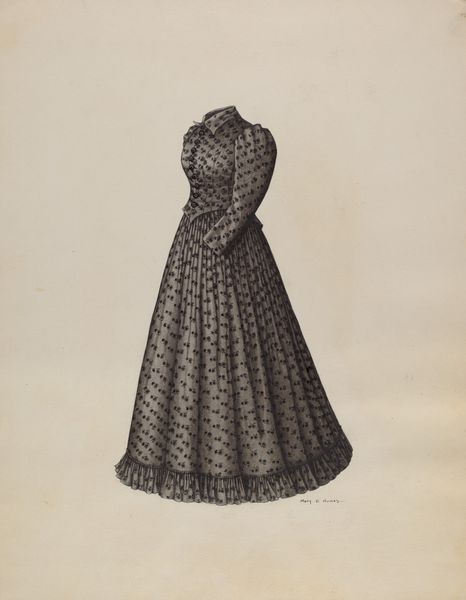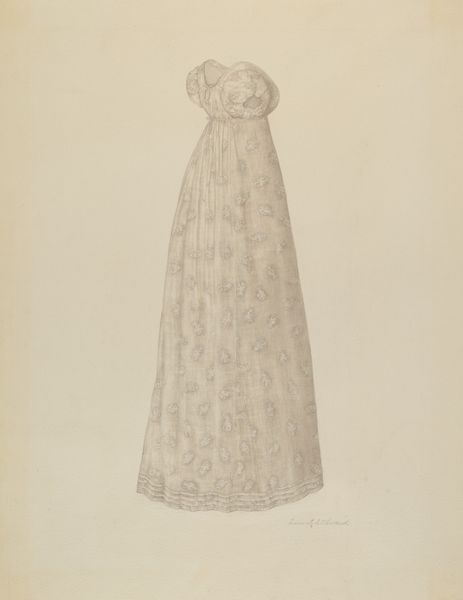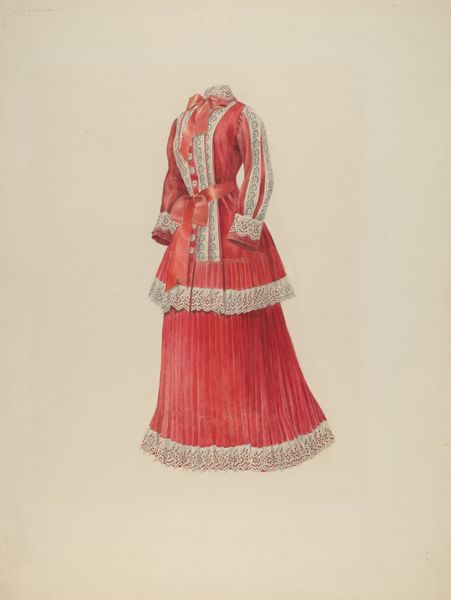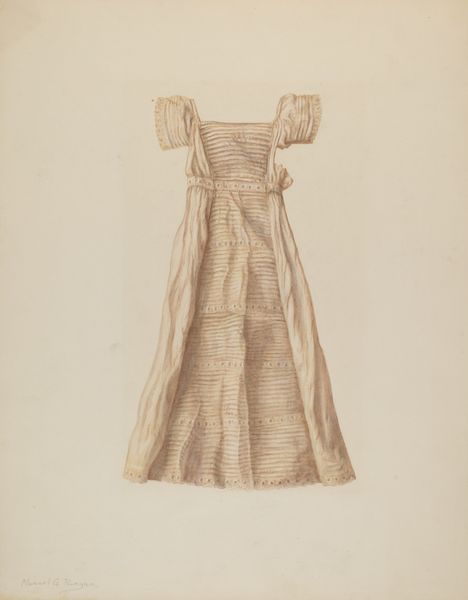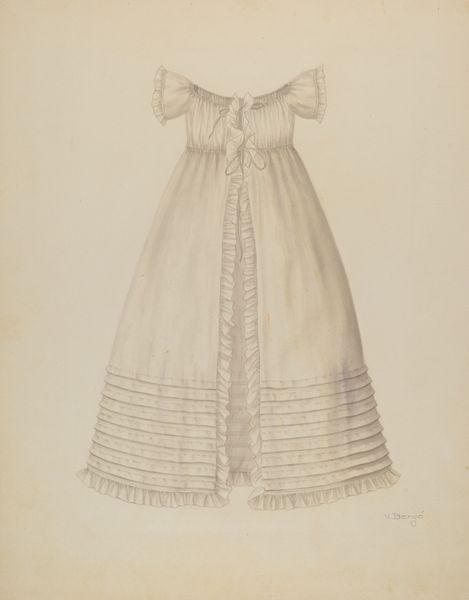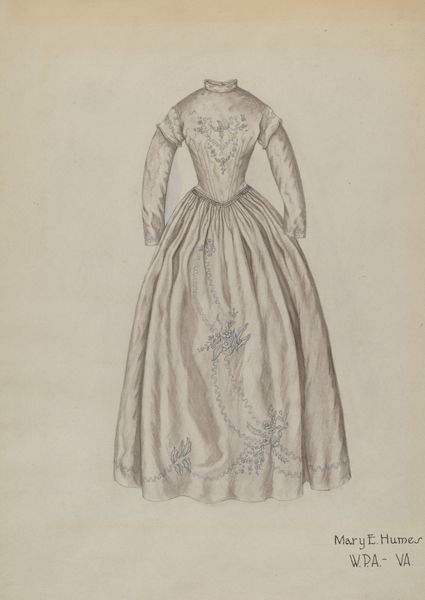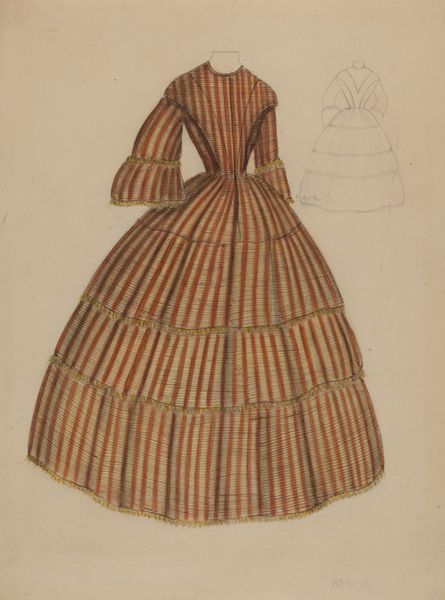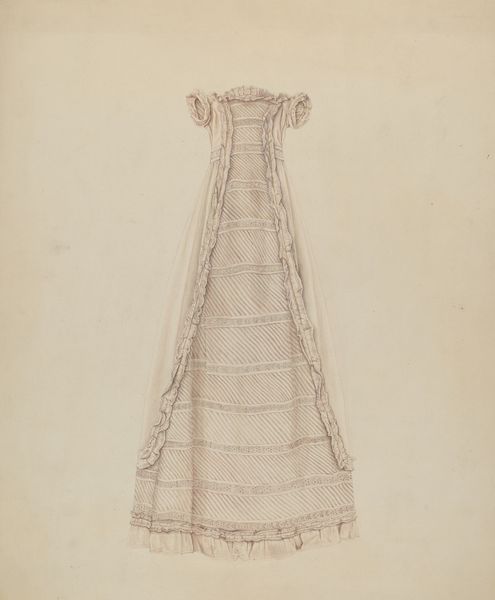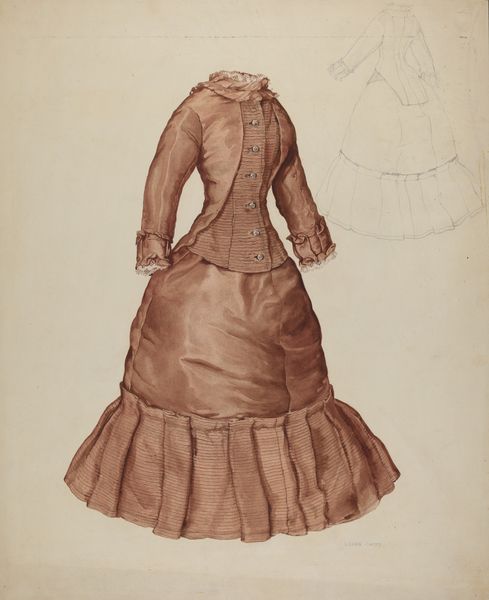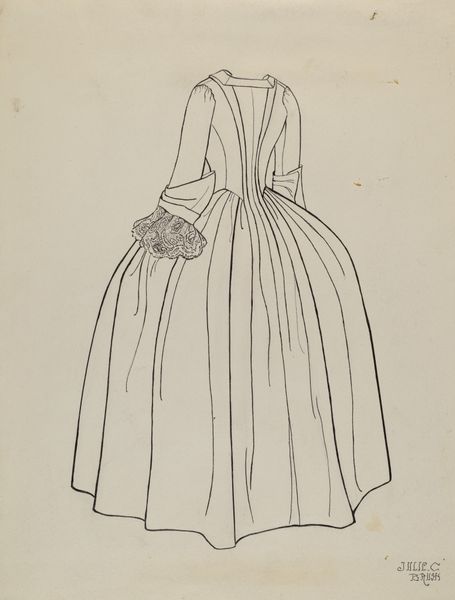
drawing
#
pencil drawn
#
drawing
#
amateur sketch
#
toned paper
#
light pencil work
#
shading to add clarity
#
pencil sketch
#
old engraving style
#
charcoal drawing
#
pencil drawing
#
pencil work
Dimensions: overall: 58.2 x 36 cm (22 15/16 x 14 3/16 in.)
Copyright: National Gallery of Art: CC0 1.0
Editor: This delicate drawing, called "Dress" by Mary E. Humes, likely made between 1935 and 1942, captures a bygone era. I’m really struck by the detail in the lace and the shading. What do you see in this piece that I might be missing? Curator: As a materialist, I see this drawing as an important document reflecting not just fashion, but the means of its production and consumption. This image likely wasn’t meant for display as “high art,” but was a pattern or design for a dress intended to be produced. The delicate shading indicates the artist's understanding of the materials the dress could have been created from – velvet, lace, satin – materials usually reserved for certain echelons of society. Editor: So you’re saying it's less about artistic expression and more about the dress's potential journey, from design to physical object? Curator: Precisely! Consider the labor involved. The drawing is just the first stage. Creating such an ornate garment would require seamstresses, potentially embroiderers, all contributing their skills and labor. Even the materials themselves - where were they sourced? How were they produced? The drawing is just the tip of the iceberg of all the industry implied here. Editor: I hadn't thought about it like that. It is easy to overlook the work and materials involved. Does the amateur style suggest anything about who this garment may have been for? Curator: Good question. Given that its style appears more “amateur sketch,” this points more likely to either homemade garments, which were commonplace and required such patterns to guide those creating the dress, or perhaps for smaller boutique houses as opposed to higher end or luxury markets. Editor: That's fascinating. Seeing it as a blueprint to understand economic and societal contexts changes my perception entirely. Curator: Exactly. By looking at the process and materiality, we begin to challenge those historical definitions of what defines art or craft and, more interestingly, to see what all might be at stake by choosing one designation over another. Editor: Thanks so much for sharing those details! I will never see fashion drawings the same way again.
Comments
No comments
Be the first to comment and join the conversation on the ultimate creative platform.
